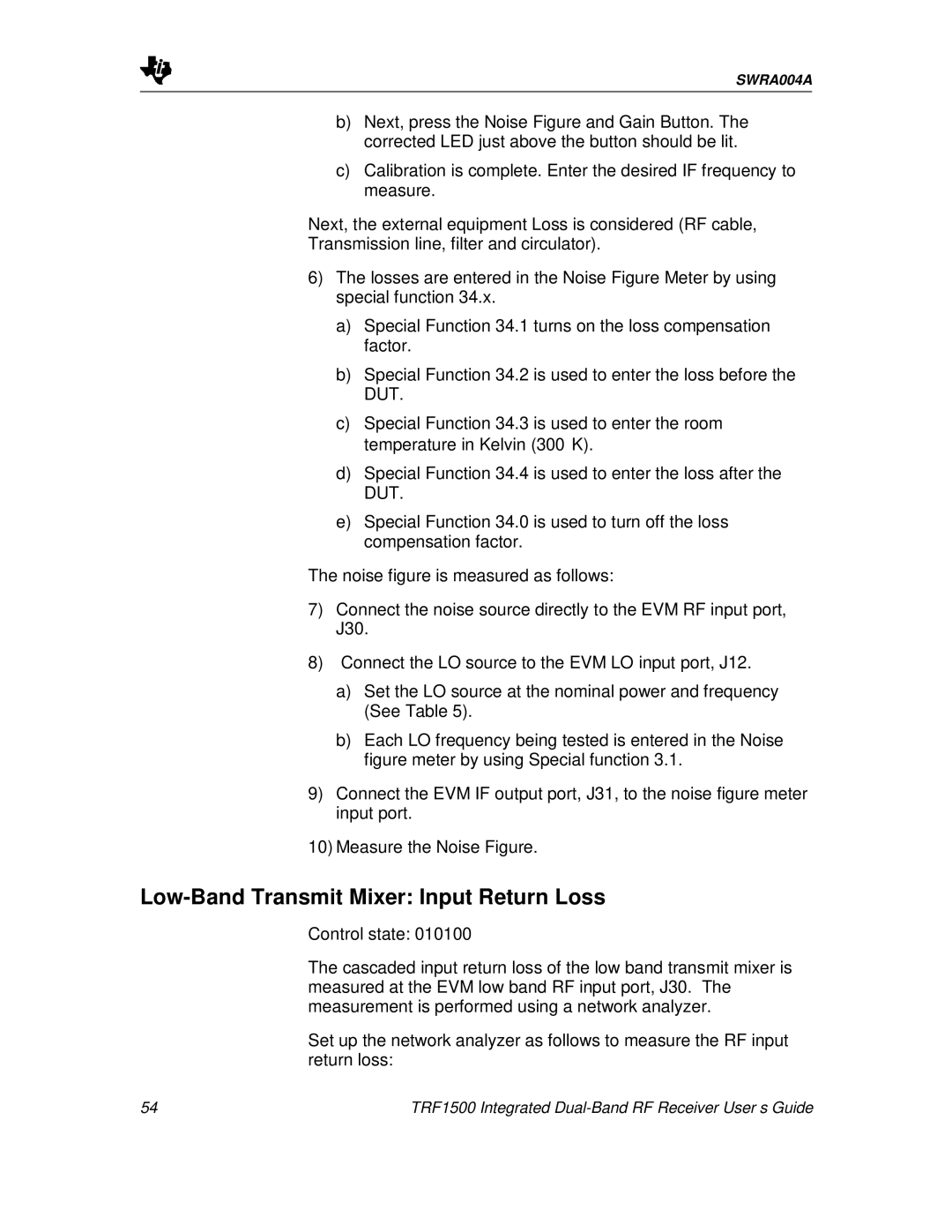SWRA004A
b)Next, press the Noise Figure and Gain Button. The corrected LED just above the button should be lit.
c)Calibration is complete. Enter the desired IF frequency to measure.
Next, the external equipment Loss is considered (RF cable,
Transmission line, filter and circulator).
6)The losses are entered in the Noise Figure Meter by using special function 34.x.
a)Special Function 34.1 turns on the loss compensation factor.
b)Special Function 34.2 is used to enter the loss before the DUT.
c)Special Function 34.3 is used to enter the room temperature in Kelvin (300°K).
d)Special Function 34.4 is used to enter the loss after the DUT.
e)Special Function 34.0 is used to turn off the loss compensation factor.
The noise figure is measured as follows:
7)Connect the noise source directly to the EVM RF input port, J30.
8)Connect the LO source to the EVM LO input port, J12.
a)Set the LO source at the nominal power and frequency (See Table 5).
b)Each LO frequency being tested is entered in the Noise figure meter by using Special function 3.1.
9)Connect the EVM IF output port, J31, to the noise figure meter input port.
10)Measure the Noise Figure.
Low-Band Transmit Mixer: Input Return Loss
Control state: 010100
The cascaded input return loss of the low band transmit mixer is measured at the EVM low band RF input port, J30. The measurement is performed using a network analyzer.
Set up the network analyzer as follows to measure the RF input return loss:
54 | TRF1500 Integrated |
